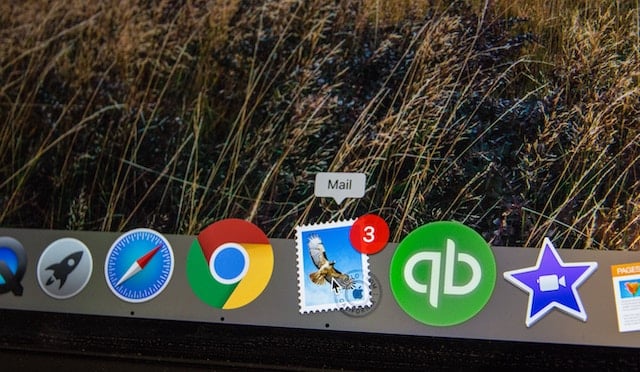 How you follow-up with leads is as important to your company's growth as how you generate them. BrightGauge Software is a dashboards and custom reporting tool for the Managed Service Provider (MSP) industry. In the beginning at BrightGauge, we did not have a formal process for following up on the leads that we would generate. The fact that we were getting leads was great, but we were unclear as to why some were closing into customers and some were not.
How you follow-up with leads is as important to your company's growth as how you generate them. BrightGauge Software is a dashboards and custom reporting tool for the Managed Service Provider (MSP) industry. In the beginning at BrightGauge, we did not have a formal process for following up on the leads that we would generate. The fact that we were getting leads was great, but we were unclear as to why some were closing into customers and some were not.

After taking some HubSpot Academy Trainings and getting a better understanding of our buyer personas, we developed a clear process for better managing our follow-up and increasing our close rates. After applying the steps that I'm about to share, we were able to increase our paying customer count by 87% and increase our revenue by 152%! These results were based on 12 months performance immediately after signing up with HubSpot.
Steps to Take When Reaching Out to a Qualified Lead
Once our inbound marketing program began to work, we started seeing an increase in demo requests on our site. We labeled demo requests as Sales Qualified Leads (SQLs), since this type of offer typically falls toward the end of a buyer's journey. When a lead converts to a SQL and the form is received, our goal is to reach out to the prospect within the first 15 to 20 minutes. Most people find it impressive since they're actively in the mode of reviewing software options, but a few folks can get spooked with a rapid response so your response should typically reflect the type of offer you are providing. In our case, with a demo, the prospect has been proactive and asked to connect with us. They have intent now, and we like to strike while the iron is hot.
Do Your Research
Before we get on the phone with the prospect we take the following research steps:
- Pull up their website to understand their service offerings and how our solution might fit.
- Determine where the prospect is located and see if we know anything about the area to make a personal connection.
- Search our CRM (Salesforce) to see any history of notes and who they may have already spoken to. You want to be careful not to ask your lead questions they've already answered or otherwise waste their time.
- Search HubSpot and look at their contact record, specifically the page views and content downloads or views to get some intel on what they are looking for and how much they might already know. With this information, you can tailor your conversation to be more relevant to the things that matter to them.
- Look up their LinkedIn Profile to see if there are common connections and what their role is within their company. If they have connections with any of your customers or your community, those might come in handy in their decision process.
- Google search their name and company for any news. We just look for any big news or something that may have happened recently. Again, nothing too specific just to give us another data point in understanding the prospect.
Knowing a little bit more about the lead will make the next steps more personal and increases your chances of a stronger initial connection and the ability to build trust. They’ve taken the time to do research on your firm, you should do the same. The most important of these steps is to see their history in your CRM and HubSpot databases to understand where their interests and experiences have been to this point.
Contact the Qualified Lead
First by Phone
Assuming we get them on the phone after our initial research, which happens approximately 60% of the time during business hours, we always break the ice by asking how they heard about us. This gives us great context for us to position the conversation and also gets them warmed up to chat with us. If they heard about us at a conference or from another customer that helps us with our positioning.
Once we’re on the phone with the prospect our goal is to build trust in the first 5 to 10 minutes. Ask them open ended questions about what they are trying to accomplish with our solution. We want them speaking about metrics and their business because that’s how we can show our value and show them that we understand their business which builds trust immediately. Trust is key.
We then dive into some of the high level technical details to make sure they can use our product. We only have a certain amount of integrations so we want to make sure we set the expectation.
Finally, we jump into the "Qualify Close" which includes asking details about budget, authority and timing. We use the below script as a guide to help move the conversation and in case someone gets stuck. Its not meant to be read out word for word, but if you follow it then we know we have a qualified close to get the demo scheduled. Everyone can put their own spin on it. Here is a breakdown from our call script:
“The next step would be a demo of our software to really do a deep dive into our platform”
“I like to be upfront about BrightGauge and I know your time is valuable so before we move to scheduling a demo I wanted to mention that given the size of your client base and team, I think you would fall into our {insert plan name} which is {insert monthly fee} per month. Do you feel that’s a fair investment based on your budget requirements?" PAUSE and DO NOT SAY ANYTHING
If yes, “Excellent, are you responsible for making this purchasing decision?”
If yes, move to schedule a demo.
If no, then find out who is and ask “when would it be a convenient time to get all of us on a demo together?”
If not sure,“Who could help us answer that question?” Once they answer, “when would it be a convenient time to get all of us on a demo together?”
If no, then identify the challenge and address it, then go back to locking in the demo.
Then by Email
If we fail to get them on the phone immediately we will send a standard "Connect Follow Up" email and use HubSpot's free app Sidekick to track the when the email gets opened or a link within it gets clicked. We make sure that the email conveys the following messages:
- Thank you for contacting us
- We would like to connect and discuss initial questions
- Please let me know when it’s a good time to connect
- If we don’t hear back we’ll try tomorrow
Below is a general sample. You will want to create your own version of this that's relevant to your customers:
We will attempt to connect three times before closing it out professionally and sending some free educational content in case they are interested. Calling three times is not scientific, but it reflects our sales experience. One email could be missed, the 2nd email just confirms it wasn’t missed and the 3rd is flirting with the line of being a pushy sales rep. Personally I feel anything more is too much.
Put Your Process in Place
The important thing is to put some process in place. You don’t have to go overboard and implement an 82 step process with automation and try to factor in every situation. The purpose is to start putting some general structure in place to make sure your team is moving the deals through the pipeline properly. Think of it like the guard rails at a bowling alley, they are just there to make sure the ball heads towards the pins, doesn’t mean you’ll get a strike or even knock a pin down, but it certainly decreases the chances of a gutter ball. And once you have enough experience you can remove the guard rails and let them fire the ball down the lane.





![Plannuh Builds Product With the Customer at the Forefront [Customer Story]](https://53.fs1.hubspotusercontent-na1.net/hubfs/53/IMG_0128-3.jpg)
![How One HubSpot Customer Uses Pop-Up Forms and Workflows to More Intelligently Help Customers [Customer Story]](https://53.fs1.hubspotusercontent-na1.net/hubfs/53/inbound-lorax-ff7a59-light.jpg)


![How TurboTenant Makes Property Management Easy With HubSpot [Customer Story]](https://53.fs1.hubspotusercontent-na1.net/hubfs/53/unique-balcony-architecture.jpg)